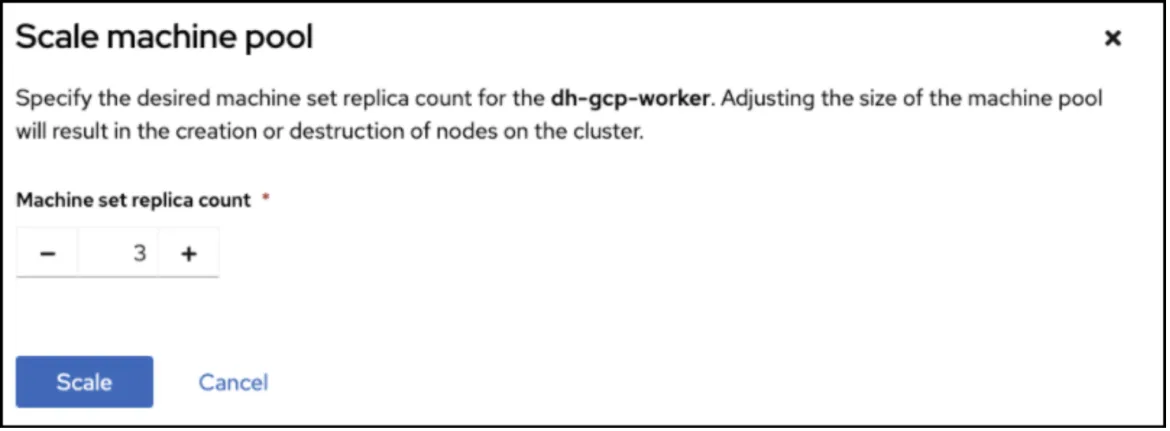Red Hat Advanced Cluster Management for Kubernetes (RHACM) helps organizations further extend and scale the Red Hat OpenShift Container Platform (RHOCP) with enterprise-grade management capabilities across hybrid and multicloud environments. It enables the management of multiple Kubernetes clusters and automates multicluster application deployments across hybrid clouds, while driving policy-based governance and compliance.
Today I’m delighted to share with you what’s new in Advanced Cluster Management for Kubernetes 2.3.
To get a better understanding of the major use cases that Red Hat Advanced Cluster Management for Kubernetes addresses, take a look at these previous blogs:
Now, let’s get into the goodness of RHACM version 2.3
There’s so much to talk about, so let me start with a list and then I’ll go deeper on some of the listed capabilities.
-
You can now import and manage Red Hat OpenShift on Amazon (ROSA) and OpenShift on IBM Power.
-
The RHACM hub cluster can now be deployed and configured on IBM Power (Tech Preview).
-
Red Hat OpenStack is now an endpoint in RHACM and we can deploy OpenShift clusters to it.
-
The cluster lifecycle capabilities have been expanded with the addition of cluster pools (Tech Preview), hibernation and resumption of clusters and cluster pools, and the ability to scale worker pools up and down (Tech Preview).
-
You can also use cluster sets to group clusters, and to be able to assign user and group RBAC permissions. This is in addition to the ability to use cluster sets to support the deployment and configuration of Submariner (Tech Preview).
-
Additionally, discover and import RHOCP clusters that you have registered with OpenShift Cluster Manager on cloud.redhat.com. This feature makes it super simple to bring these RHOCP clusters under RHACM management.
-
In addition to being able to centrally upgrade RHOCP versions, you can also update the RHOCP cluster version channels from the console, continuing to simplify RHOCP upgrades.
-
Ansible is integrated with RHACM across the cluster lifecycle management, application lifecycle management, and governance use cases.
-
OpenShift GitOps (Argo CD) is integrated with RHACM application lifecycle management.
-
There are also new out-of-the-box governance policies, along with community policies.
-
You can access analytics through Red Hat Insights for Red Hat OpenShift. Bring the Insights analysis of the RHOCP fleet down into the hub cluster so that you have a simple view of critical issues within the RHACM hub cluster.
-
There are improvements with cluster observability management.
-
The RHACM console has a more refined look and is more inline with the RHOCP console.
Cluster lifecycle management
There’s already a ton of actions that can be taken against OpenShift and Kubernetes clusters. In this release, there are some notable features in the cluster lifecycle management I’d like to touch on: cluster pools, cluster sets, cluster hibernation and resumption, and enhancements to upgrades.
Cluster pools
Cluster pools are used for quick access to OpenShift clusters in an on-demand fashion. Create a cluster pool with a number of clusters, the clusters are created, and then put in a hibernating power state. Users can Claim the clusters, and the clusters are then powered on and available in a matter of a few minutes. View the following images of the consoles:
Immediately after a cluster is claimed, a new cluster is created to replace it in order to maintain the cluster pool scale number.
Cluster sets
Cluster sets are used for the grouping of clusters to enable Role-Based Access Control (RBAC) management across the clusters within the cluster set. It also supports the grouping of clusters to be used by Submariner, and simplifies the installation and configuration of Submariner. Submariner enables a secure network tunnel between clusters so that applications that span clusters can communicate securely. View the following images:
Additional cluster actions
There are a number of new cluster related actions from the connsole.
- You can use actions like Hibernate clusters and Resume clusters. Hibernate cluster performs a graceful shutdown of a cluster. Resume cluster brings a cluster online from being in a
hibernatepower state. There is also a tool called,hibernate-cronjob, to help organizations gracefully hibernate and resume clusters, which saves cloud costs.
- You can now scale and enable autoscale of worker node machine pools in the RHACM console. View the following images:
- Centrally managing OpenShift release upgrades is a huge benefit of RHACM. Now you can also manage upgrades and switch to higher RHOCP release channels.
- Lastly, RHACM can now discover any RHOCP cluster(s) you may have registered with cloud.redhat.com, and they can be easily imported to be managed by RHACM.
RHACM - Ansible Automation Platform integration
This is one of the super exciting new features of RHACM. Ansible Automation Platform integration was previously available within the application lifecycle of RHACM as a tech preview. But now, this integration is also available in the cluster lifecycle and in the RHACM governance use cases. You can integrate RHACM with one or many Ansible Automation Platform instances.
In the cluster lifecycle management use case, you can now launch Ansible job templates during the creation or upgrade of a cluster. These job templates can be initiated before and or after the creation, or upgrade actions.
When it comes to governance and compliance of clusters, there may be a need to create some Ansible job templates if a violation is detected, and to remediate the non-compliant condition(s). Well, now you can! These job templates can be initiated after a violation is detected, and there are a number of schedule automation options that can be selected. View the following image for a list of options:
In the application lifecycle management use case, you can now launch Ansible job templates when you create or update an application. These job templates can start before and or after the creation or update activities. In the application topology view, you can see Ansible jobs and their status.
RHACM - OpenShift GitOps (Argo CD) Integration
OpenShift GitOps is the Red Hat downstream Argo CD application that is deployed as an operator. Many organizations use OpenShift GitOps to deploy and manage applications. Well now the RHACM application lifecycle fully supports OpenShift GitOps (Argo CD). You can distinguish between applications deployed using OpenShift GitOps vs. RHACM. RHACM can provide a consolidated view of all applications by presenting all applications in RHACM, including any applications deployed using OpenShift GitOps.
Additional resources
-
To learn more about Red Hat Advanced Cluster Management, visit: https://www.redhat.com/en/technologies/management/advanced-cluster-management
-
To try Red Hat Advanced Cluster Management, visit: https://www.redhat.com/en/technologies/management/advanced-cluster-management/try-it
-
To request a demonstration of Red Hat Advanced Cluster Management, visit: https://www.redhat.com/en/technologies/management/advanced-cluster-management#contact-form
About the author
Hicham is responsible for technical marketing of the Red Hat Ansible Automation Platform on Clouds. Hicham has been in the software industry for over 20 years and for many of them focused on cloud management. Hicham has been a frequent presenter at events and conferences like VMworld, vForum, VMUG, VMLive, Gartner, Dell Technology World, AWS re:Invent, HPE Discover, Cloud Field Day, Red Hat Summit, AnsibleFest, in addition to Customer events.
Browse by channel
Automation
The latest on IT automation for tech, teams, and environments
Artificial intelligence
Updates on the platforms that free customers to run AI workloads anywhere
Open hybrid cloud
Explore how we build a more flexible future with hybrid cloud
Security
The latest on how we reduce risks across environments and technologies
Edge computing
Updates on the platforms that simplify operations at the edge
Infrastructure
The latest on the world’s leading enterprise Linux platform
Applications
Inside our solutions to the toughest application challenges
Original shows
Entertaining stories from the makers and leaders in enterprise tech
Products
- Red Hat Enterprise Linux
- Red Hat OpenShift
- Red Hat Ansible Automation Platform
- Cloud services
- See all products
Tools
- Training and certification
- My account
- Customer support
- Developer resources
- Find a partner
- Red Hat Ecosystem Catalog
- Red Hat value calculator
- Documentation
Try, buy, & sell
Communicate
About Red Hat
We’re the world’s leading provider of enterprise open source solutions—including Linux, cloud, container, and Kubernetes. We deliver hardened solutions that make it easier for enterprises to work across platforms and environments, from the core datacenter to the network edge.
Select a language
Red Hat legal and privacy links
- About Red Hat
- Jobs
- Events
- Locations
- Contact Red Hat
- Red Hat Blog
- Diversity, equity, and inclusion
- Cool Stuff Store
- Red Hat Summit
















